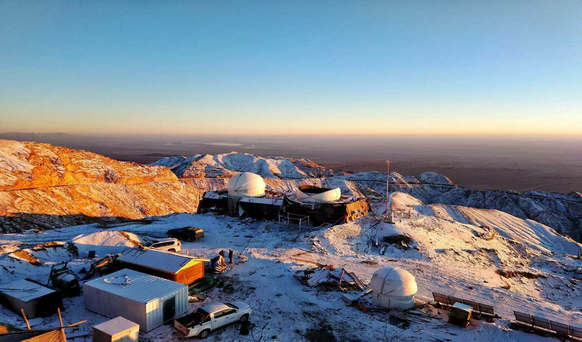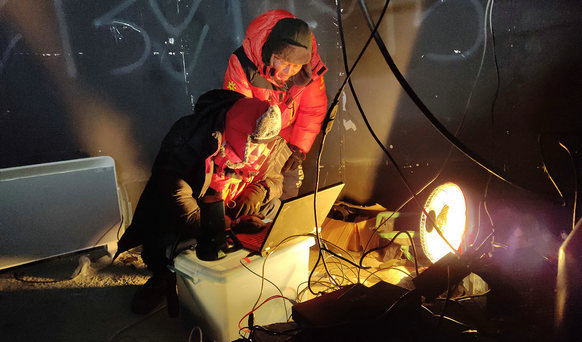NAOC releases details of new top-class site for astronomy observatory
The National Astronomical Observatories of China (NAOC) on Wednesday unveiled the details of a world-class site on the Qinghai-Tibetan Plateau for the construction of an optical astronomy observatory.
The announcement was published in the journal Nature.
The site, which sits at an altitude of 4,200-4,500 meters, is on a summit near a town named Lenghu, or "Cold Lake," in northwest China's Qinghai Province.
The Lenghu site's optical observation conditions are similar to those of the top-tier observatories in the Western Hemisphere, according to Professor Deng Licai, leader of the NAOC's large optical and infrared telescope team.

Fig.1: Infrastructure construction at the Lenghu site in northwest China's Qinghai Province. Deng Licai/NAOC
Deng said that the site has an extremely arid climate with 70 percent of the nights in a year having clear and photometric conditions, and the median night temperature variation there is only 2.4 degrees Celsius, indicating very stable local surface air.
Deng and his team started selecting the site in 2017. With help from the local government, they have completed the initial infrastructure construction at the potential site at an altitude of 4,200 meters on Mount Saishiteng near Lenghu Town.
During the period, the team and constructors climbed to the site dozens of times, carrying instrumentation and recording important data.

Fig.2: NAOC members work at the Lenghu site in Qinghai Province. Deng Licai/NAOC
In the announcement, the team said that the site occupies a unique geographic position in the Eastern Hemisphere and bridges the huge gap between Mauna Kea (155.8246° W), Atacama (70.4042° W) and the Canary Islands (17.8577° W).
This will form a perfect network of ground-based, high-quality observatories ready for great scientific discoveries, according to the team.
"That includes searching signs of life on exoplanets, electromagnetic counterparts of gravitational wave outbursts and many more," said Deng.
The seeing and weather data for the Lenghu site collected during 2018 and 2020 are available on a public website, lenghu.china-vo.org. (CGTN)
This study result is available at https://www.nature.com/articles/s41586-021-03711-z